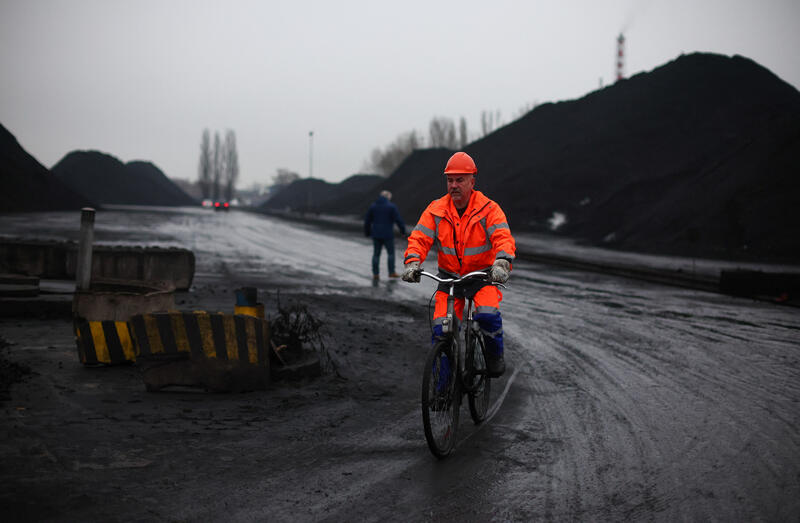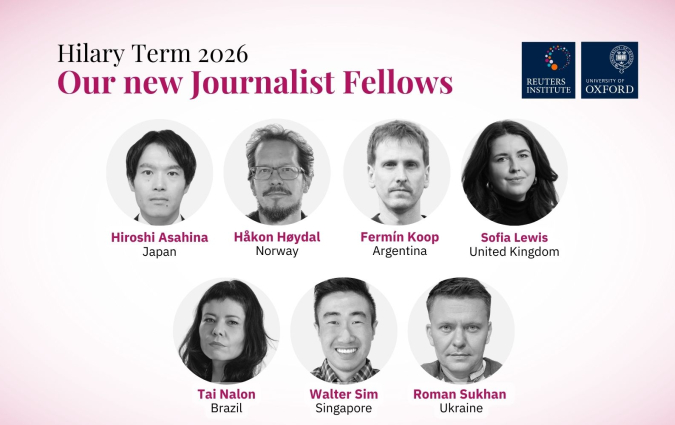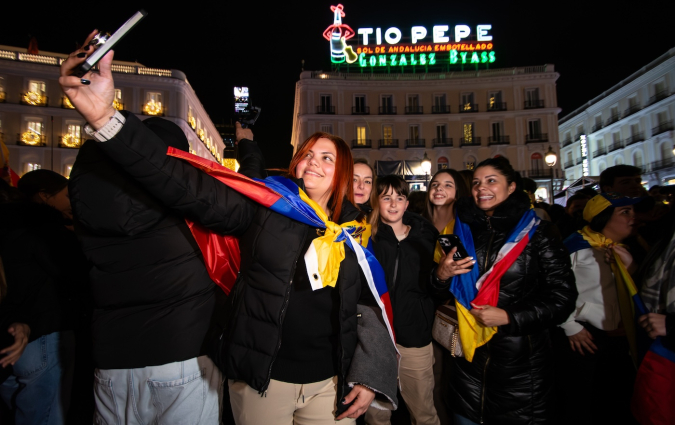To report on climate change where coal is king, journalists need to focus on solutions

A man rides a bike through the coal storage area in Port Gdanski Eksploatacja in Gdansk, Poland, on December 5, 2022. Credit: Kacper Pempel/Reuters
When Katowice, Poland, hosted the COP24 climate conference in 2018, foreign journalists were shocked to see coal decorating the meeting’s venue, or spotted lying next to houses.
But seeing coal on streets and in courtyards, waiting to be shoved into a basement before winter, is hardly a surprising sight for Poles.
No other EU country uses nearly as much coal for heating. And because coal is the most polluting type of fuel, Poland's reliance on it for over 70% of its electricity generation makes the country’s power sector very carbon-intensive—almost three times the EU average.
That comes with its own challenges. Faced with political pressure from the coal industry and the government, Polish journalists have had to find effective ways to counter disinformation and inform our audiences. The best approach is to focus on covering solutions: not just using facts but presenting stories that highlight local sources and pragmatic opportunities.
Let me give you an example. With rising awareness of air pollution and climate change, the costs of using coal have become more apparent. As a response, coal marketed for heating homes got a rebrand as “ekogroszek” (literally “eco-pea”, for the small size of the coal lumps), a supposedly “environmentally friendly” fuel. Sold in shiny bags with green logos branded with a recycling symbol, it is advertised as “low polluting”.
There is no such thing as low polluting coal, but the branding worked. In a poll for ClientEarth, 43% of respondents said that they consider “ekogroszek” an ecological fuel. Even the Polish government, which until 2021 was subsidising new coal furnaces in “clean air” programmes, has told the public that a certain type of coal is indeed “ecological fuel”.
Our traditional approach is to simply confront this story with scientific facts. But this tactic might be too little too late to convince some readers. If I’ve been encouraged to heat my home with coal all my life, I might not be convinced that coal is bad.
On the other hand, if my neighbour has lowered his energy bill with solar panels and a heat pump, now that’s another story. While a big portion of Polish society remains sceptical of climate policy as a whole, support for specific solutions—like wind farms or rooftop solar—is very high. People view these solutions pragmatically—in terms of lower bills, energy independence, and improving quality of life. That support goes largely across political divisions.
Stories about these solutions are also what readers are interested in, as I saw after publishing stories on rising interest in heat pumps or the experience of people living next to Poland’s second-biggest wind farm as a reporter for Gazeta.pl, one of Poland’s largest online newspapers.
This also reflects a changing reality. A common talking point in Poland is how the coal industry is important for the economy, jobs, and energy security. But there is another side to the Polish coal story.
While coal is still the backbone of electricity generation and heat for millions, its economic significance has been dwindling. Coal extraction has been falling since the 1980s, and is now at levels last seen shortly after the Second World War. Coal mining may employ 80,000 workers, but by 2021, Poland employed an estimated 56,700 workers in the solar PV sector—the largest solar workforce in Europe, according to the International Renewable Energy Agency.
A mayor of a small town with 60 wind turbines can be much more convincing than experts from Brussels. That’s not to say that the media should ditch the experts and scientific reports. But solutions-focused reporting on the transition, green jobs and industries can resonate more if they’re based on real-life experiences and examples, as opposed to stories that simply report that the “government says we need coal, experts say we don’t”.
The lessons we’ve learned in Poland can apply anywhere. Many countries are grappling with political polarisation, pressure from high-emissions industries is widespread, and many newsrooms are struggling with how best to write and report climate stories so they resonate with audiences. We need to convey the urgency of the climate crisis—but we should give our audiences solutions, too.
Finally, focusing on solutions is helpful for me personally as a reporter. Political polarisation around the topic and the lack of progress has at times been frustrating, and actually seeing solutions at work and being able to convey this to my audience has been a welcome change.
Hopefully, this might resonate with others in the field. For journalists as well as audiences, a ‘solutions’ focus—with stories that feel closer to people’s lives—can feel more constructive, and, for a change, even positive.







